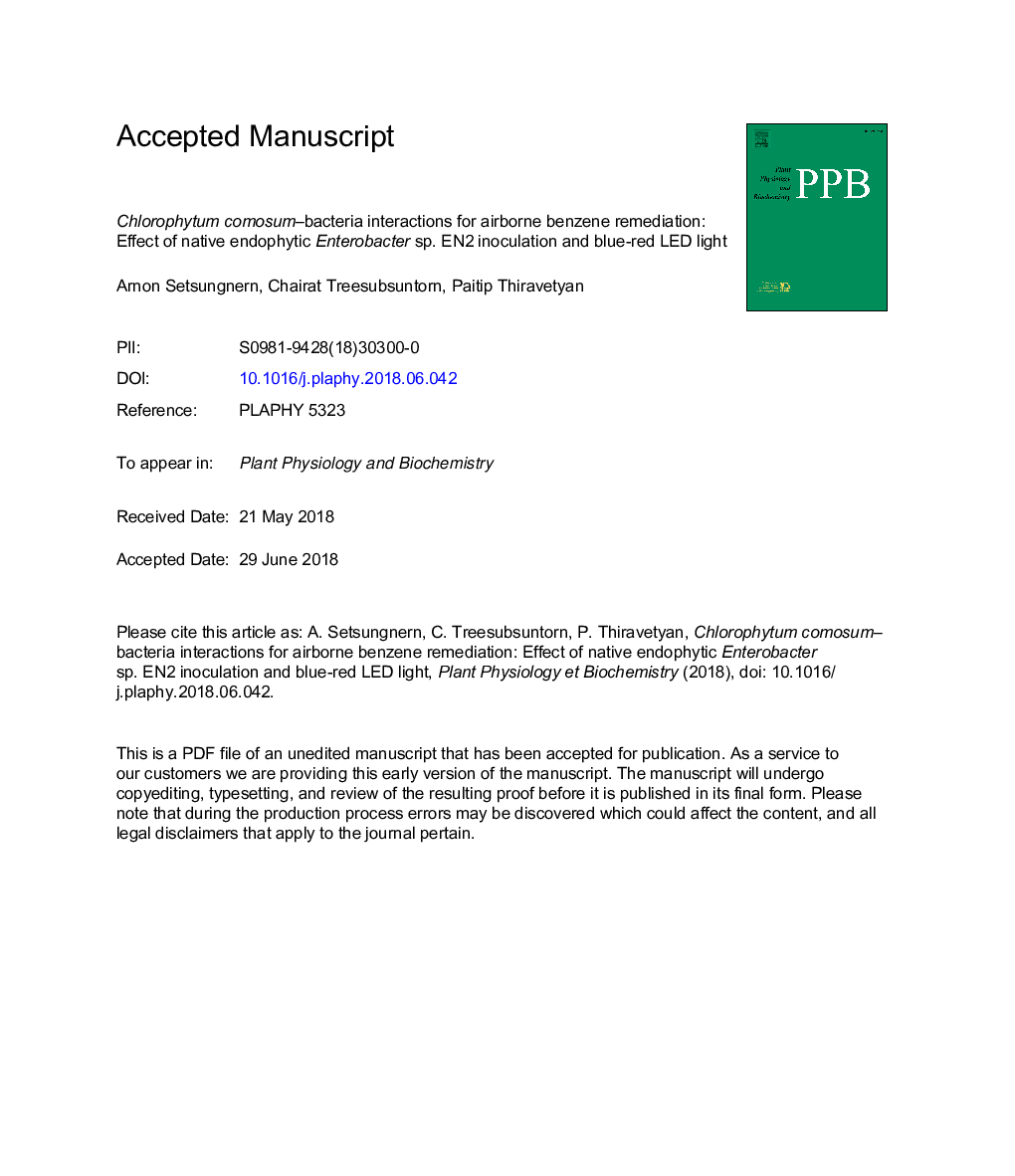| کد مقاله | کد نشریه | سال انتشار | مقاله انگلیسی | نسخه تمام متن |
|---|---|---|---|---|
| 8352438 | 1541891 | 2018 | 34 صفحه PDF | دانلود رایگان |
عنوان انگلیسی مقاله ISI
Chlorophytum comosum-bacteria interactions for airborne benzene remediation: Effect of native endophytic Enterobacter sp. EN2 inoculation and blue-red LED light
دانلود مقاله + سفارش ترجمه
دانلود مقاله ISI انگلیسی
رایگان برای ایرانیان
کلمات کلیدی
موضوعات مرتبط
علوم زیستی و بیوفناوری
علوم کشاورزی و بیولوژیک
دانش گیاه شناسی
پیش نمایش صفحه اول مقاله

چکیده انگلیسی
This study was performed to determine the effect of plant-endophytic Enterobacter sp. EN2 interactions and blue-red LED light conditions on gaseous benzene removal by plants. It was found that under consecutive benzene fumigation for three cycles (18 days), inoculation of the strain EN2 into sterilized and non-sterilized native C. comosum resulted in significantly increased gaseous benzene removal compared to that in non-inoculated groups under the same light conditions (Pâ¯<â¯0.05). Remarkably, EN2 colonization in inoculated plants under LED conditions was higher than under fluorescence conditions as the EN2 could grow better under LED conditions. Strain EN2 possesses NADPH that is used to facilitate benzene degradation and modulate plant growth under benzene stress by bacterial IAA production and ACC deaminase activity; higher IAA and lower ethylene levels were found in inoculated plants compared to non-inoculated ones. These contributed to better benzene removal efficiency. Interestingly, under fumigation for 16 cycles (67 days), there was no difference in gaseous benzene removal between inoculated plants and non-inoculated plants under the same light conditions at initial benzene concentrations of 5â¯ppm. This is probably due to EN2 reaching maximum growth under all treatments. However, C. comosum exhibited better benzene removal under LED conditions than under fluorescence conditions during 16 cycles, possibly due to better photosynthetic performance and plant growth, leading to more NADPH, and eventually enhanced benzene removal efficiency. Hence, the most efficient acceleration of benzene removal was provided by inoculation of strain EN2 onto C. comosum under blue-red LED light conditions.
ناشر
Database: Elsevier - ScienceDirect (ساینس دایرکت)
Journal: Plant Physiology and Biochemistry - Volume 130, September 2018, Pages 181-191
Journal: Plant Physiology and Biochemistry - Volume 130, September 2018, Pages 181-191
نویسندگان
Arnon Setsungnern, Chairat Treesubsuntorn, Paitip Thiravetyan,